
Salmon Stations Around the Easter Ross Peninsula
By Douglas Gordon
I researched, with the assistance of Will Paterson, the salmon netting stations around the Easter Ross peninsula on the Dornoch and Moray Firths and all the people who worked there catching salmon with help from many locals whose relatives worked on the salmon stations over the years. The salmon netting industry was closed down by the Scottish Government in 2019.
***
To the Sea: The Start of the Salmon Season
The salmon season ran from 11th February to 26th August - the fishermen then went to the harvest on the land. In February when the men were first taken on they were mending nets, boats and gear ready for netting season, they [Charlie & Dan Paterson] employed about 80 men for all the 16 salmon stations. Stretching from near the north Sutor below Castlecraig farm on Moray Firth 'round Tarbatness Lighthouse to Dornoch Firth and Paterson Island near Inver. The salmon bothies at Tarrel and Kinyaka were burnt down some time during the 1970s, they were made of wood and Will Paterson rebuilt the Tarrel with concrete blocks.
 Image provided by Douglas Gordon
Image provided by Douglas Gordon
Map of salmon stations and bothies, all run by the Paterson family, on the Easter Ross Peninsula
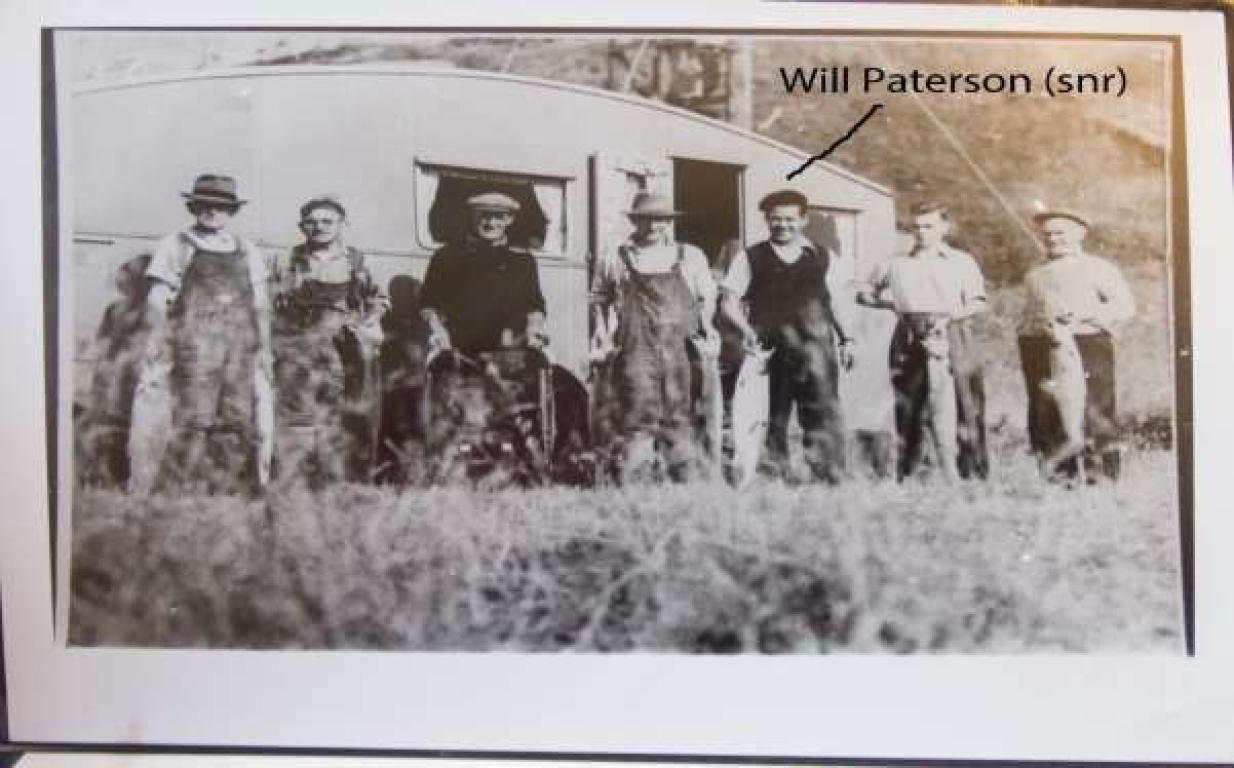 Image provided by Douglas Gordon/ William Paterson
Image provided by Douglas Gordon/ William Paterson
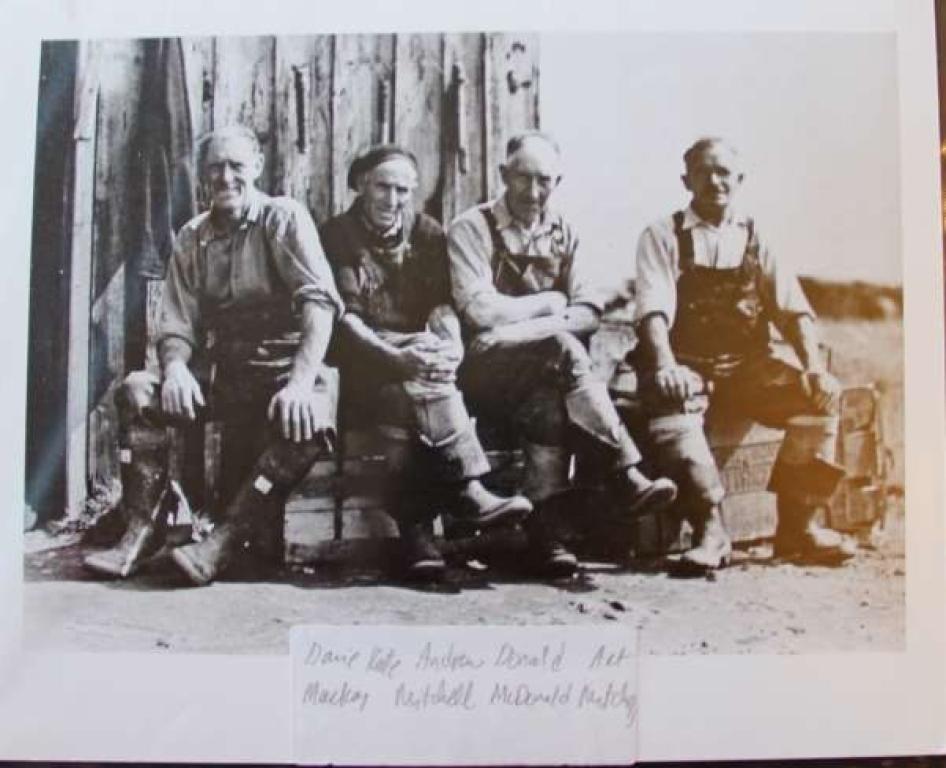 Image provided by Douglas Gordon/ William Paterson
Image provided by Douglas Gordon/ William Paterson
Salmon fishermen from the village of Rockfield, Tarbat Peninsula.
There was a salmon station away out in the Morrich that they were asked to close it down and got paid by the air ministry not to fish for salmon there in around the 1930s, so Charlie and Dan Paterson sunk big posts into a sand bank and built a platform that was 6 feet (2 metres) above high tide when the sand bank was submerged and built a bothy on top of it and the coble could be tied next to platform.
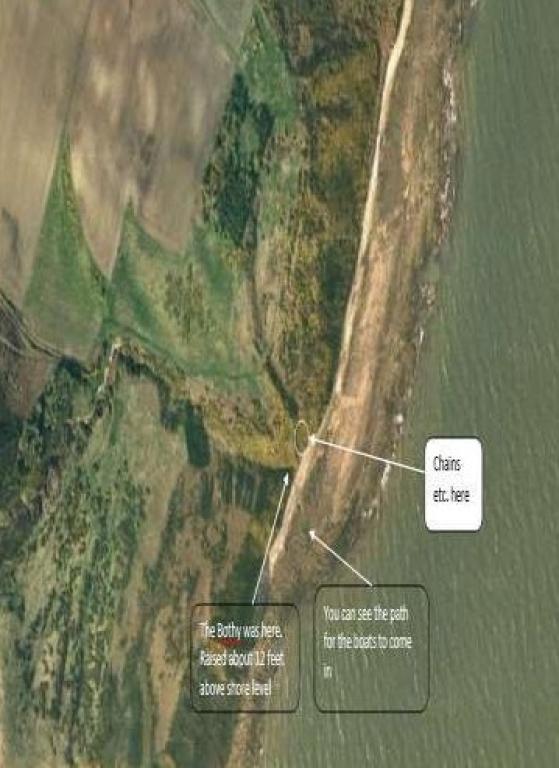 Image provided by Douglas Gordon/ Nick Vass
Image provided by Douglas Gordon/ Nick Vass
Alterations to the landscape around the Salmon Bothy at the Nose or Balnagown. A channel was created to trap salmon, and appears like the area to the right was also terra-formed.
When they were not busy they filled sand bags and built up sand bank and eventually covered it. They covered sand bags with old nets to help the marram grass to grow and called it Paterson Island. Now the bothy is 200 metres from the sea and it is across the Inver River from mainland and now Paterson Island is joined on to the Morrich More. It was not as good as the old site for netting salmon which must have been out near Innis Mhòr Island but not sure where about it was. There is no sign of the old bothy out past Innis Mhòr.
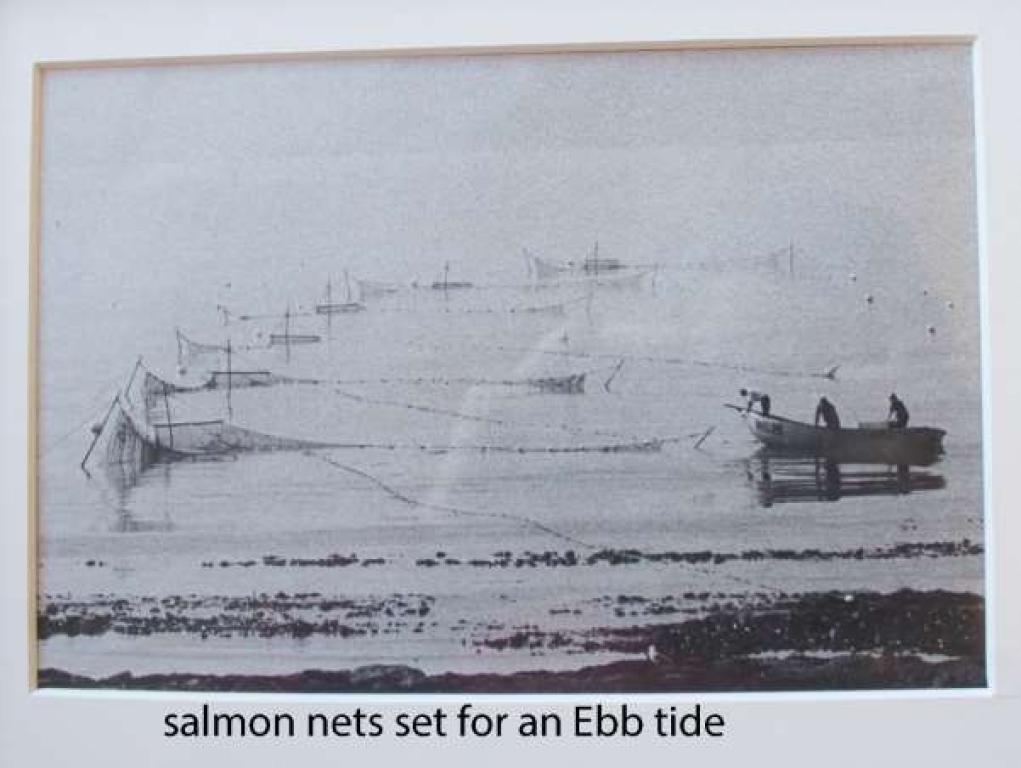 Image provided by William Paterson
Image provided by William Paterson
 Image provided by William Paterson
Image provided by William Paterson
From left to right: (L) Sketch by William Paterson depicting salmon nets being set for an Ebb tide. (R) Painting of Paterson Island bothy. Image of painting provided by William Paterson.
William Paterson remembers crossing the Inver River at low tide west of Inver below Newton to go to Paterson Island. He serviced this tractor every year and painted it to keep rust away from salt water, also he renewed steering ball joints as salt water soon corroded them so they needed replaced every year.
Salmon Cobles and Ice Houses
The salmon cobles needed 4 men to row them and in some cases 6 men, some of them also had a drop down keel with a mast for a sail. So that was why there is was many bothies at salmon stations - for horse and cart could take then them to Balintore.
At the bothies along below Nigg hill the cobles had to be hauled up steep bank to the top to be loaded on to horse and carts. Then once the motorised salmon coble came they were able to take them by boat back to Balintore, which made such a difference especially when seas were rougher.
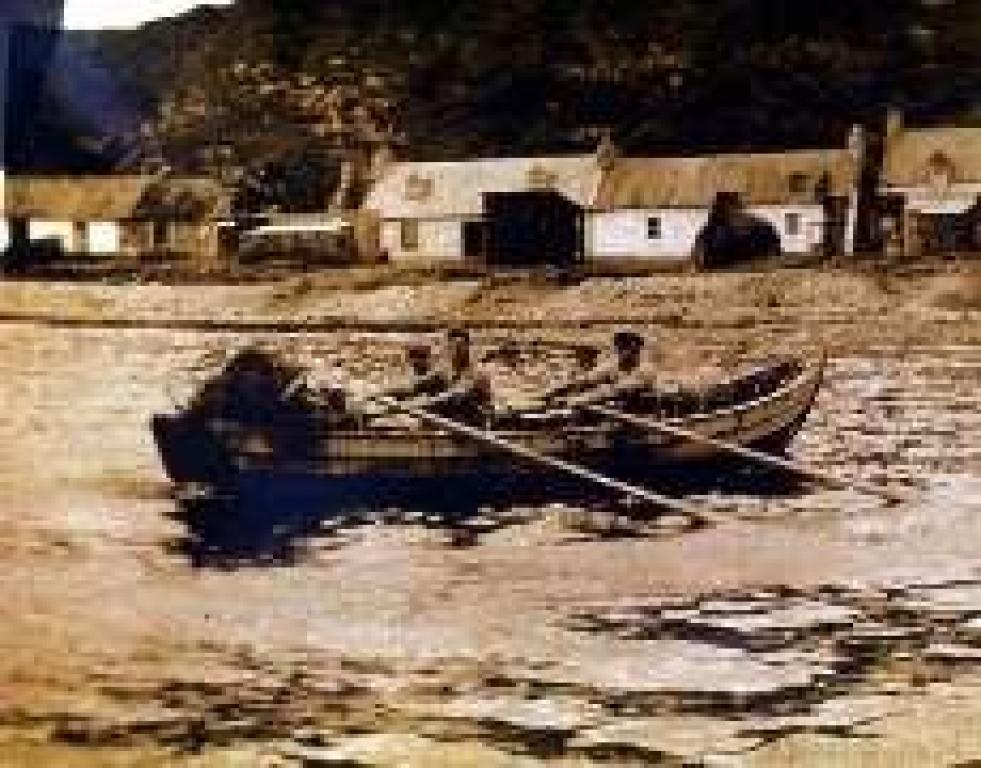
A salmon coble at Rockfield, a fishing village on the Tarbat Peninsula, being rowed by four men.
There were ice houses to keep salmon fresh and the ice would be gathered in winter. The Portmahomack ice houses got their ice from Loch Ballone near the golf course and Bindal Duck pond which was down at the bottom of Bindal Farmhouse garden just beside the field and road to go down to castle and Moray Firth mast.
The ice had to be 6 inches (150 mm) thick before they broke the ice up with axes and sledge hammers and put into horse and carts. They were put down a shute into a hole in roof of ice house. These ice houses were built into hillsides, below ground, to help stop ice melting for the salmon season when it started.
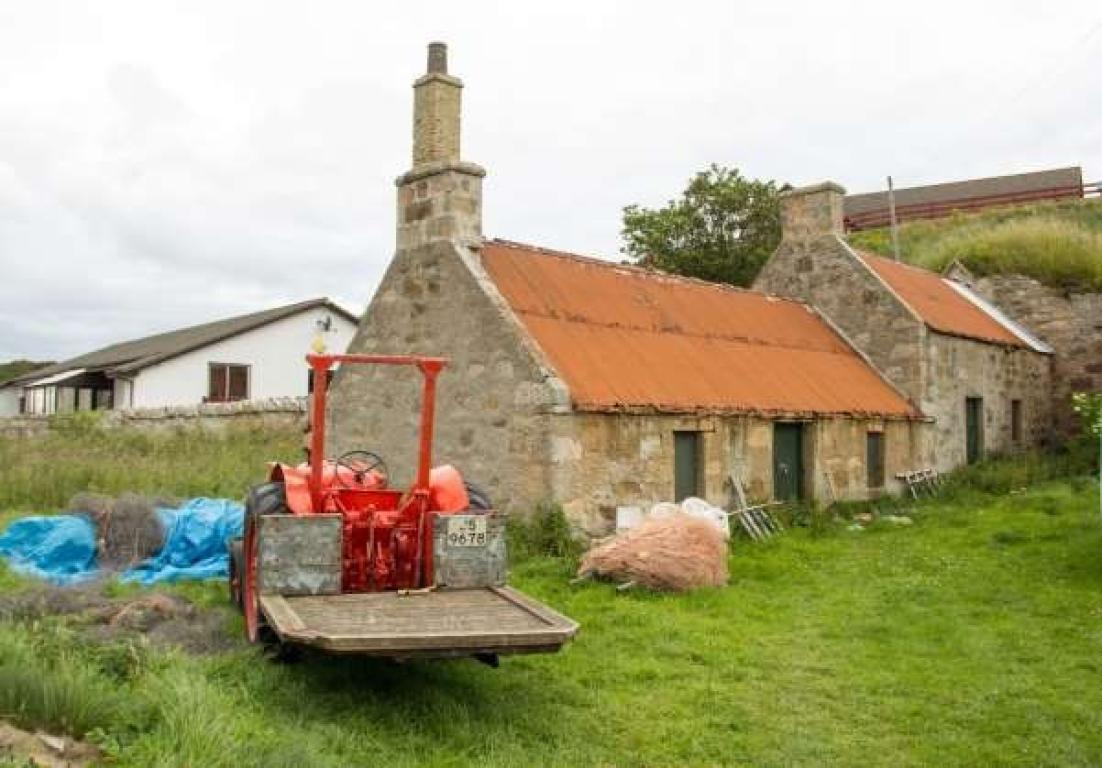 Image provided by Douglas Gordon
Image provided by Douglas Gordon
Portmahomack Salmon Bothy and Ice House
***
The MacKenzies
Tommy MacKenzie sent me this photo of Kinyaka salmon bothy, where his father worked before moving onto Balintore or Hilton. He also named most of the Salmon bothies on Balintore side for my research but did not know of Paterson Island and some on Portmahomack side but Will Paterson named them all.
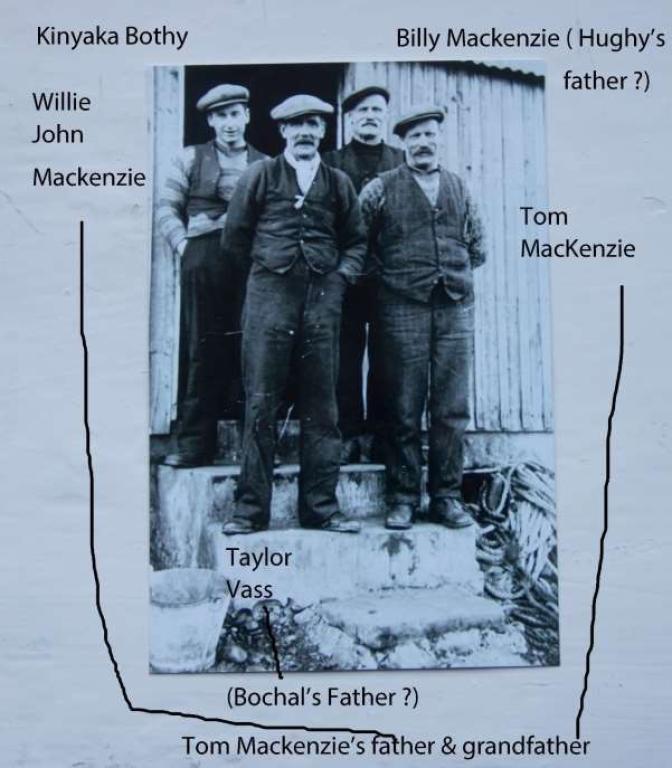 Image provided by Tom MacKenzie
Image provided by Tom MacKenzie
Billy, Willie John and Tom MacKenzie with Taylor Vass at Kinyaka Bothy, Easter Ross
There was a bothy where the stream comes down from Easter Rarichie. The concrete base is slowly disappearing. There are chains and steal wire in the stream. I think there used to be a winch there too, to take salmon up cliff to top so they could be collected by horse and cart to go to Balintore.
Tommy remembers two salmon bothies at Kinyaka and when you see all the netting stations they had to work they would have needed 2 salmon bothies!
***
The Decline of Salmon Netting Stations
In an effort to boost salmon stocks, the Scottish government brought out rules for the salmon netting season for 2015 was from 1st April to 26th August. They had nets out at Portmahomack, Drumincroy and Tarrel and had a good season at Portmahomack where they caught a lot of salmon.
A total salmon netting ban, however, was imposed in 2016 has now been extended indefinitely by the Scottish Government. Putting out a net to catch salmon now results in jail time, and the salmon are to be left to mercy of seals which feed on them. The memories of a once thriving industry and tradition which had long been the focus of many peoples' livelihoods for generations is now fading away.
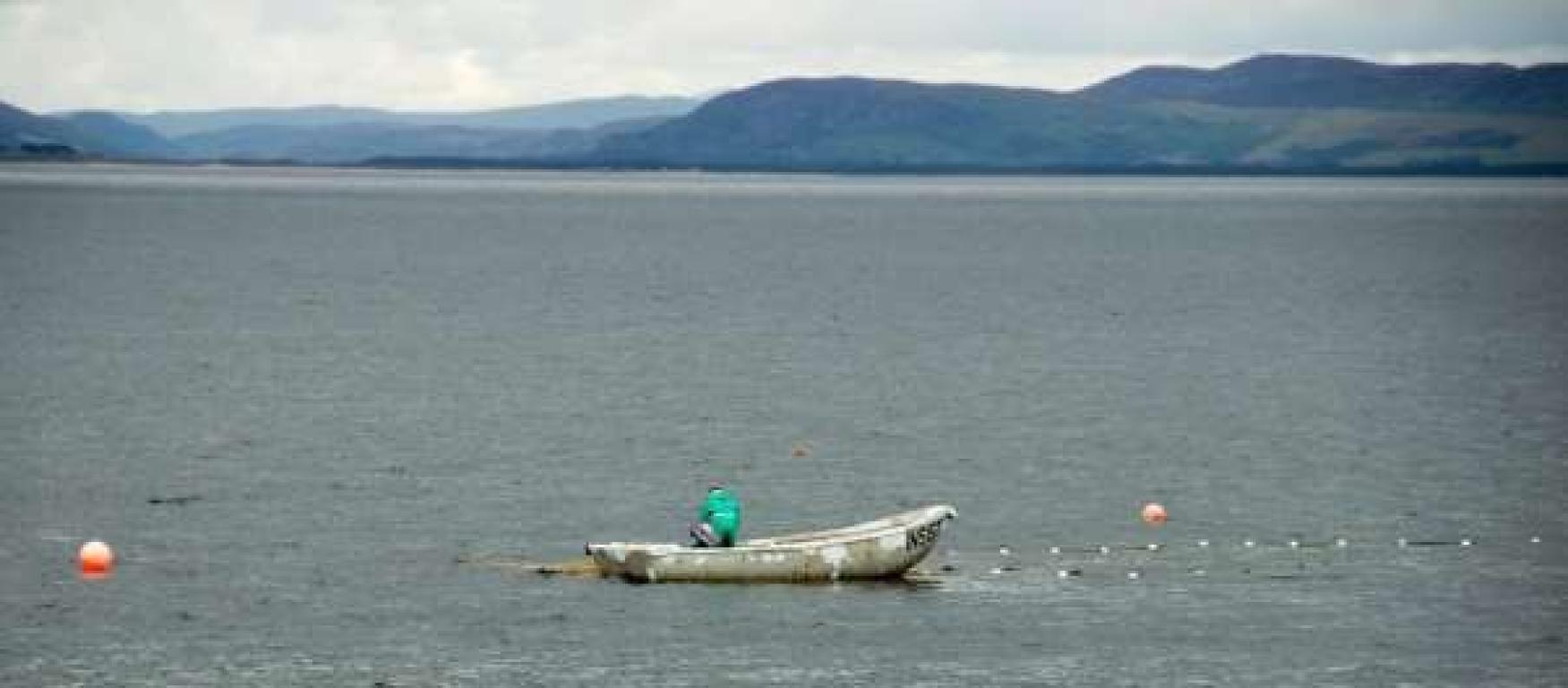 Image provided by Douglas Gordon
Image provided by Douglas Gordon
Salmon coble and salmon nets off Portmahomack, 27th August 2015. Here, Hugh Docherty is seen checking nets for salmon.
We Want to Hear From You!
Share your stories and memories of Tain and Easter Ross
Stories are at the heart of what we do as a project and we are always looking to learn more about what the Highlands and Islands means to people who live, work, and visit here. Tain and Easter Ross is an iconic part of the Highlands, with a rich natural and cultural heritage to discover. We would love to know, what are some of your favourite memories or stories related to Tain and Easter Ross? Tell us below, we can't wait to hear from you!
Click here to share your story through our online story portal.